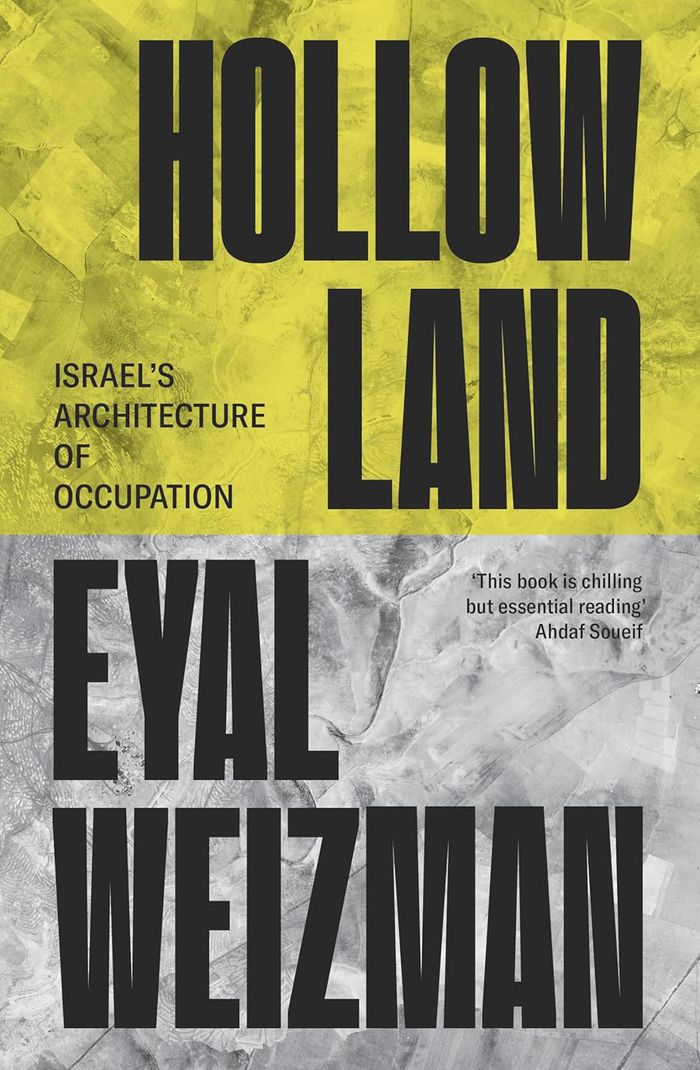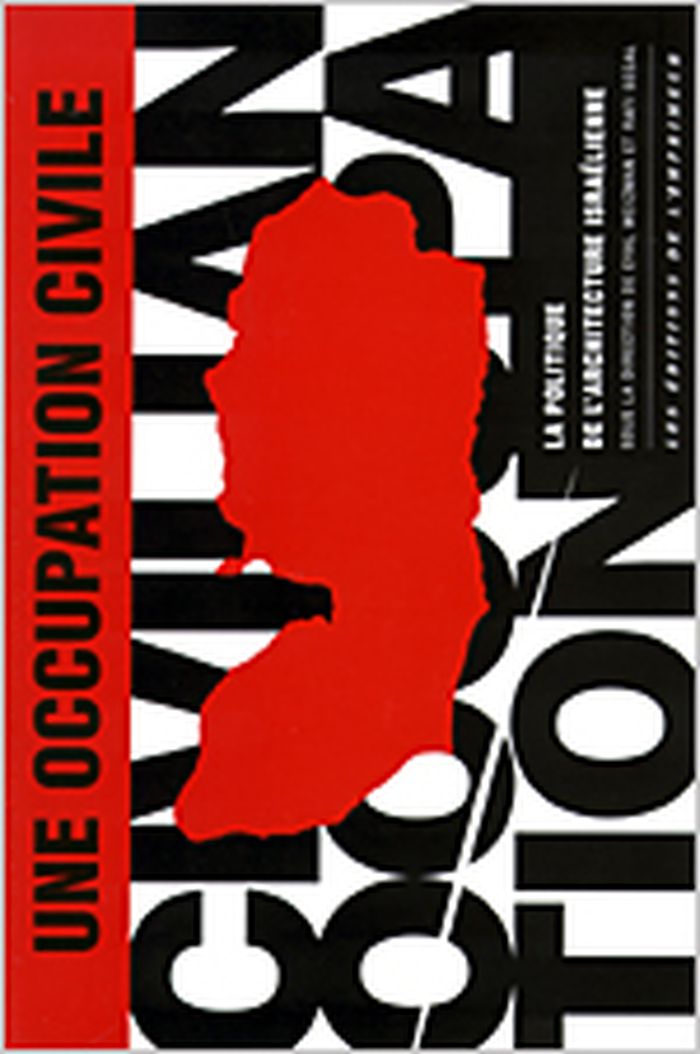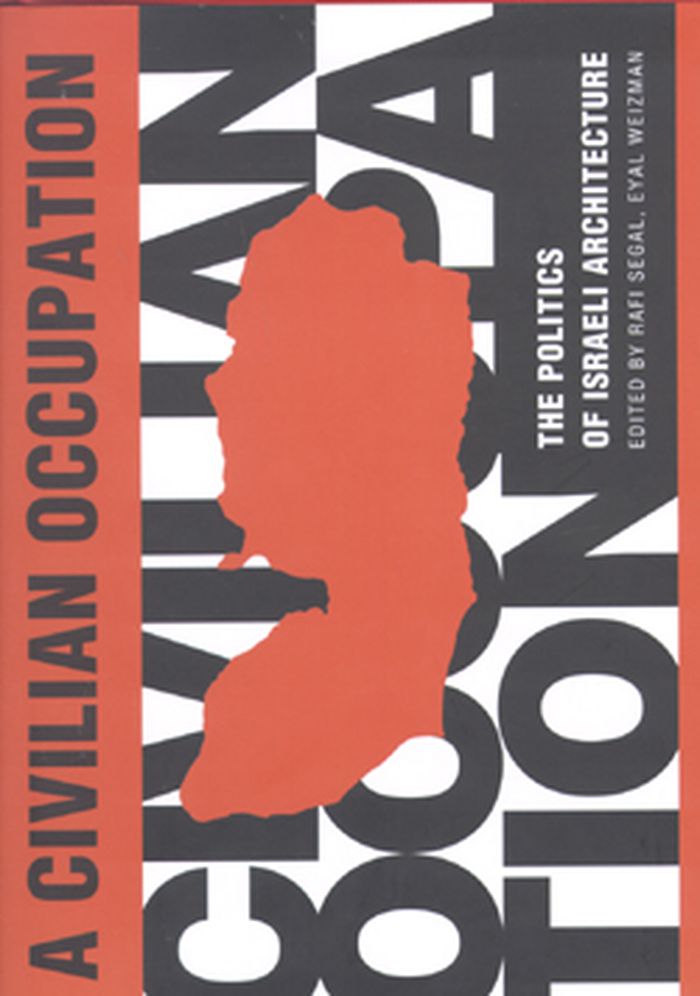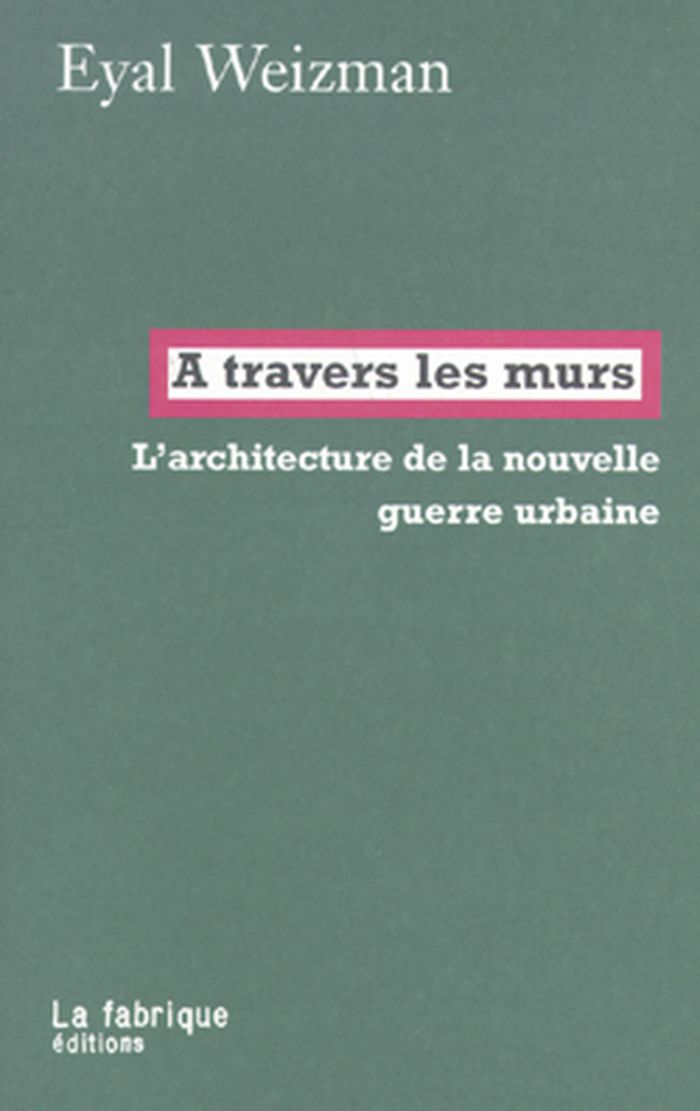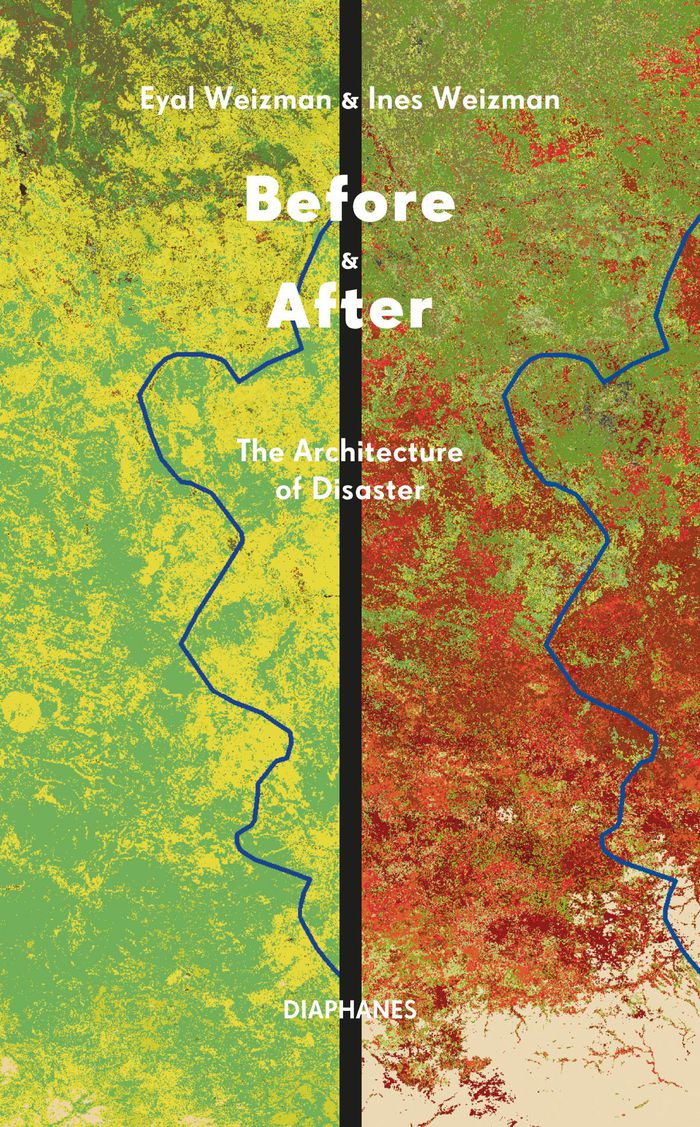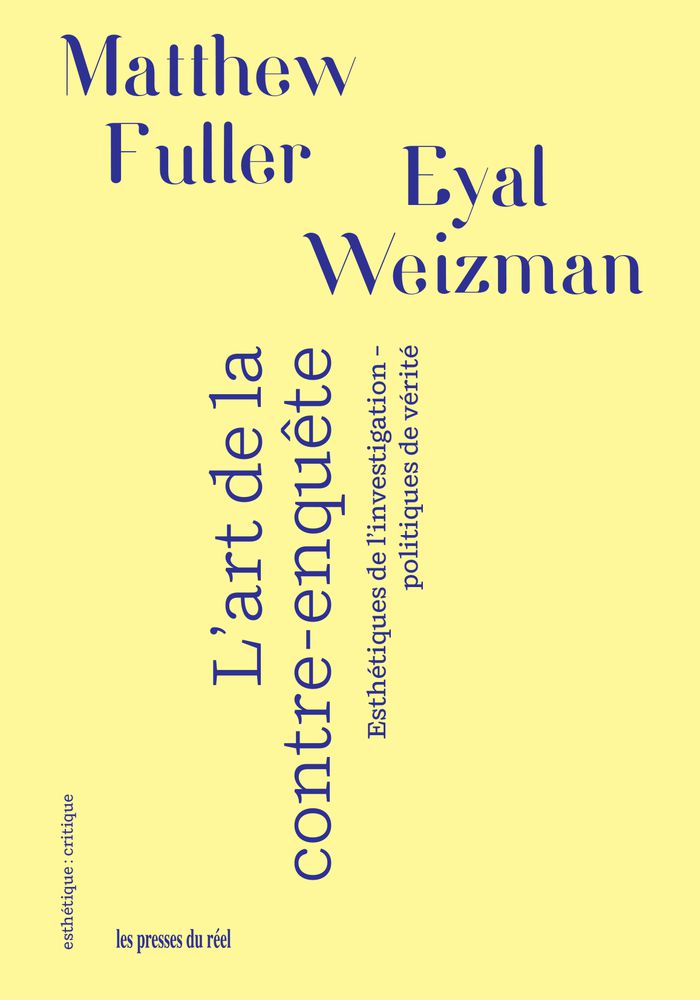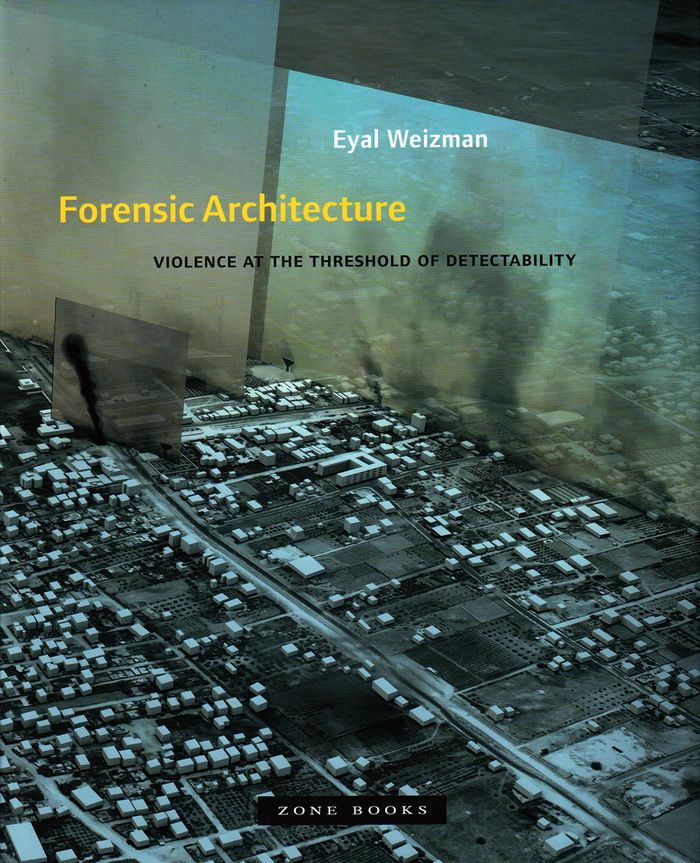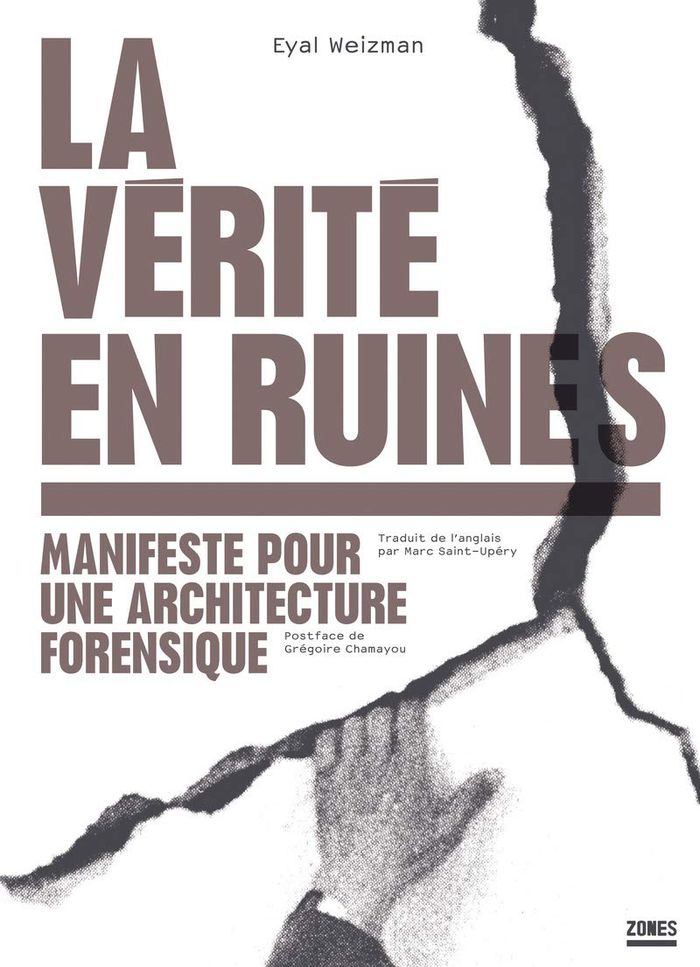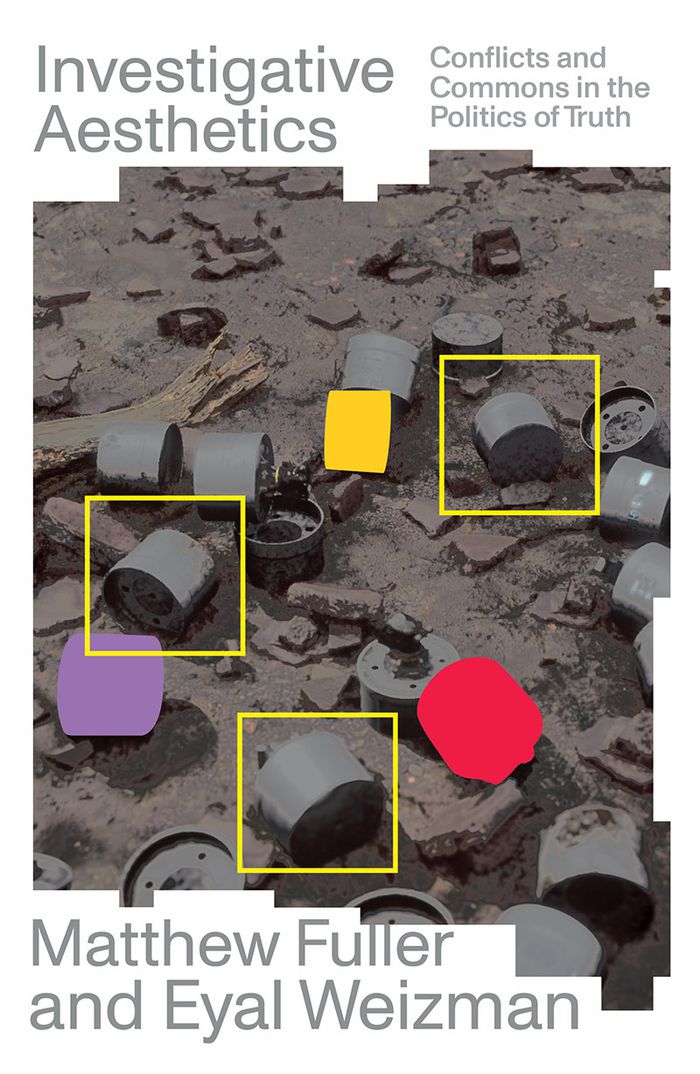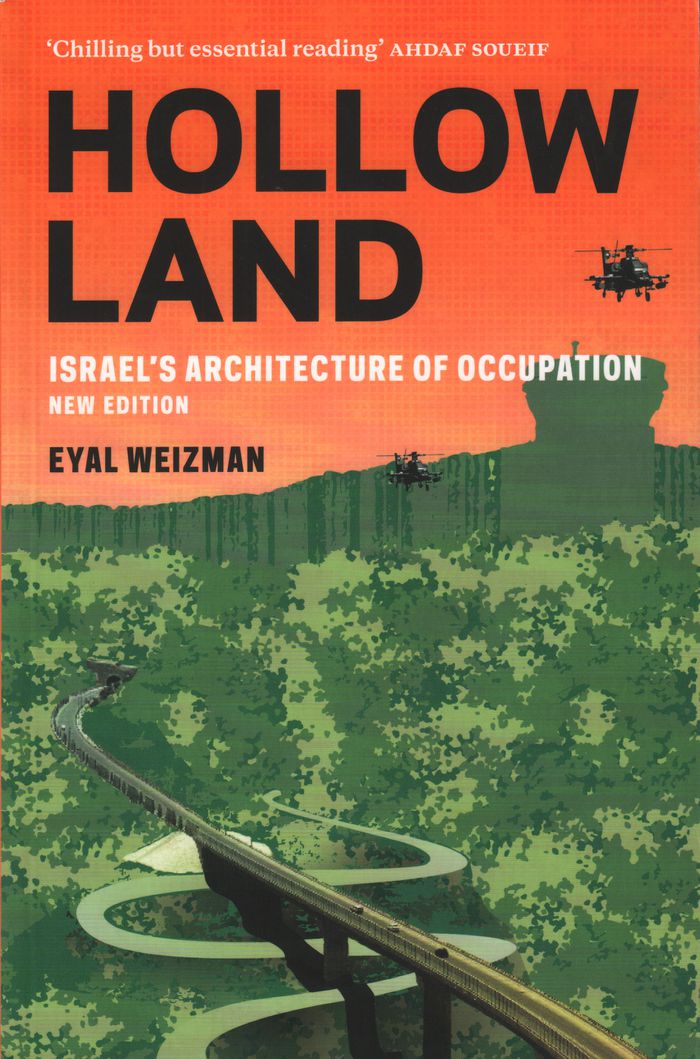$39.95
(available in store)
Summary:
How does Israel extend its control over Palestinian lands? From the tunnels of Gaza to the militarized airspace of the Occupied Territories, Eyal Weizman unravels the mechanisms of control and how they have transformed Gaza and the West Bank into a war zone. This is essential reading for understanding how architecture and infrastructure are used as lethal weapons in the(...)
Hollow land: Israel's architecture of occupation
Actions:
Price:
$39.95
(available in store)
Summary:
How does Israel extend its control over Palestinian lands? From the tunnels of Gaza to the militarized airspace of the Occupied Territories, Eyal Weizman unravels the mechanisms of control and how they have transformed Gaza and the West Bank into a war zone. This is essential reading for understanding how architecture and infrastructure are used as lethal weapons in the formation of Israel. In this new edition, Weizman explains how the events following the invasion of Gaza in October 2023 bear witness to the continuing policies of oppression. He details how this book became a foundational text for Forensic Architecture.
Arch Middle East
$66.95
(available in store)
Summary:
Ce livre traite de politique et d'architecture - de leurs interactions, de leurs intersections. Une occupation civile. La politique de l'architecture israélienne est la somme de travaux d'architectes, d'universitaires et d'auteurs israéliens, qui permet d'examiner le rôle de l'architecture israélienne dans le conflit du Moyen-Orient. À travers des essais, des cartes et(...)
Architecture since 1900, Middle-East
September 2003, Besançon
Une occupation civile : la politique de l'architecture israélienne
Actions:
Price:
$66.95
(available in store)
Summary:
Ce livre traite de politique et d'architecture - de leurs interactions, de leurs intersections. Une occupation civile. La politique de l'architecture israélienne est la somme de travaux d'architectes, d'universitaires et d'auteurs israéliens, qui permet d'examiner le rôle de l'architecture israélienne dans le conflit du Moyen-Orient. À travers des essais, des cartes et des photographies, Une occupation civile démontre comment l'architecture et l'urbanisme sont, en un siècle, passés du statut d'activités professionnelles banales à celui d'instruments tactiques et d'armes stratégiques. Depuis le début du XXe siècle, le projet déclaré du sionisme consistait à bâtir un foyer national pour le peuple juif sur la terre d'Israël. Depuis l'offensive d'implantation des années trente, fondée sur les villages de type Homa Oumigdal (mur et tour) en passant par la planification totale de l'État d'Israël peu après son indépendance, jusqu'à la colonisation des territoires occupés de 1967 à ce jour - l'architecture israélienne a été l'instrument concret de la réalisation du projet sioniste, exactement à l'image de son objectif utopique. La controverse politique et professionnelle qui a suivi l'interdiction de la première édition de cet ouvrage par son éditeur originel, l'Association israélienne des architectes unis, est la preuve flagrante que l'architecture n'est absolument pas une activité innocente. Puisque Israël peut être considéré comme l'un des laboratoires les plus radicaux de notre époque, les questions que pose ce livre doivent être étudiées dans un contexte bien plus large: la politique de l'architecture israélienne n'est finalement pas différente de la politique de toute architecture.
Architecture since 1900, Middle-East
$30.00
(available to order)
Summary:
"A Civilian Occupation" is the first attempt by Israeli architects, scholars, journalists, and photographers to highlight the role of Israeli architecture in the Middle East conflict.
History until 1900, Asia
September 2003, New York
A civilian occupation : the politics of Israeli architecture
Actions:
Price:
$30.00
(available to order)
Summary:
"A Civilian Occupation" is the first attempt by Israeli architects, scholars, journalists, and photographers to highlight the role of Israeli architecture in the Middle East conflict.
History until 1900, Asia
$23.95
(available in store)
Summary:
Lors de la réoccupation des villes de Palestine au printemps 2002, l'armée israélienne a utilisé une tactique inédite: au lieu de progresser dans les rues tortueuses des vieux quartiers ou des camps de réfugiés, les soldats passaient de maison en maison, à travers murs et planchers, évitant ainsi de servir de cibles aux résistants palestiniens. Cette méthode,(...)
À travers les murs: l'architecture de la nouvelle guerre urbaine
Actions:
Price:
$23.95
(available in store)
Summary:
Lors de la réoccupation des villes de Palestine au printemps 2002, l'armée israélienne a utilisé une tactique inédite: au lieu de progresser dans les rues tortueuses des vieux quartiers ou des camps de réfugiés, les soldats passaient de maison en maison, à travers murs et planchers, évitant ainsi de servir de cibles aux résistants palestiniens. Cette méthode, "conceptualisée" sous le nom de "géométrie inversée" par des généraux qui aiment à citer Debord, Deleuze et Guattari ou Derrida, représente un tournant postmoderne dans la guerre des villes.
History until 1900, Asia
$32.00
(available in store)
Summary:
Catastrophes, bombed-out cities, large-scale political transformations: “Image complexes” of humanitarian and ecological upheaval document the world as a sequence of catastrophes. But who decides how events are presented, determines the resolution of our visual worlds, and controls the circulation or censorship of images? Eyal and Ines Weizman trace the history of the(...)
Before & After: The architecture of disaster
Actions:
Price:
$32.00
(available in store)
Summary:
Catastrophes, bombed-out cities, large-scale political transformations: “Image complexes” of humanitarian and ecological upheaval document the world as a sequence of catastrophes. But who decides how events are presented, determines the resolution of our visual worlds, and controls the circulation or censorship of images? Eyal and Ines Weizman trace the history of the before-and-after image from nineteenth-century photography to contemporary satellite images and discover a gap that not only conceals the devastating event: it is the human subject itself that is in danger of disappearing from the images. Does humanitarian work, the documentation and reconstruction of war crimes, in which people’s fates and rights should be at the center of attention, paradoxically enter a post-human phase? How can the gap between images become a site of critical counter-reading rather than a symbol of erasure? In the context of their current research, Eyal and Ines Weizman discuss the history, present, and future of the paradigm of the before-and-after image in an exclusive conversation with Marie Glassl.
Architectural Theory
$54.95
(available in store)
Summary:
Un nombre croissant d'artistes contemporains opte pour le mode de l'enquête. Plutôt que de « faire œuvre », ces artistes se soucient avant tout de documenter la violence d'État, l'effet des technologies répressives ou la destruction de l'environnement. En parallèle, des journalistes, des avocats et des activistes ont de plus en plus recours à des pratiques de(...)
L'art de la contre-enquête : Esthétiques de l'investigation, politiques de vérité
Actions:
Price:
$54.95
(available in store)
Summary:
Un nombre croissant d'artistes contemporains opte pour le mode de l'enquête. Plutôt que de « faire œuvre », ces artistes se soucient avant tout de documenter la violence d'État, l'effet des technologies répressives ou la destruction de l'environnement. En parallèle, des journalistes, des avocats et des activistes ont de plus en plus recours à des pratiques de visualisation issues du domaine de l'art. En croisant vidéos amateurs, images satellites et témoignages, des contre-enquêtes voient le jour dont la dimension visuelle et esthétique a d'autant plus d'impact. Le livre donne à voir toute l'ampleur de cette nouvelle « esthétique d'investigation » : en mobilisant des stratégies éprouvées en art ou en architecture, il s'agit de montrer les torts subis et de faire émerger une vérité souvent inconfortable. Le travail mené depuis désormais de longues années par « Forensic Architecture » rejoint d'autres pratiques de contre-analyse citoyenne, afin de briser les monopoles d'État sur les technologies de surveillance et de contredire les récits officiels. Que ce soit dans l'atelier ou le laboratoire, la salle d'audience ou la galerie, en ligne ou dans la rue, cet art de la contre-enquête replace la vérité au cœur d'un souci partagé et tisse les liens d'un nouveau « sens commun ».
Architectural Theory
Forensic architecture
$49.95
(available to order)
Summary:
In recent years, the group Forensic Architecture began using novel research methods to undertake a series of investigations into human rights abuses. Today, the group provides crucial evidence for international courts and works with a wide range of activist groups, NGOs, Amnesty International, and the UN. Forensic Architecture has not only shed new light on human rights(...)
Forensic architecture
Actions:
Price:
$49.95
(available to order)
Summary:
In recent years, the group Forensic Architecture began using novel research methods to undertake a series of investigations into human rights abuses. Today, the group provides crucial evidence for international courts and works with a wide range of activist groups, NGOs, Amnesty International, and the UN. Forensic Architecture has not only shed new light on human rights violations and state crimes across the globe, but has also created a new form of investigative practice that bears its name. The group uses architecture as an optical device to investigate armed conflicts and environmental destruction, as well as to cross-reference a variety of evidence sources, such as new media, remote sensing, material analysis, witness testimony, and crowd-sourcing. In "Forensic architecture", Eyal Weizman, the group’s founder, provides, for the first time, an in-depth introduction to the history, practice, assumptions, potentials, and double binds of this practice. The book includes an extensive array of images, maps, and detailed documentation that records the intricate work the group has performed. Traversing multiple scales and durations, the case studies in this volume include the analysis of the shrapnel fragments in a room struck by drones in Pakistan, the reconstruction of a contested shooting in the West Bank, the architectural recreation of a secret Syrian detention center from the memory of its survivors, a blow-by-blow account of a day-long battle in Gaza, and an investigation of environmental violence and climate change in the Guatemalan highlands and elsewhere.
Architectural Theory
$38.95
(available in store)
Summary:
Comment, dans un paysage politique en ruines, reconstituer la vérité des faits ? La réponse d'Eyal Weizman tient en une formule-programme: "l'architecture forensique". Approche novatrice au carrefour de plusieurs disciplines, cette sorte d'architecture se soucie moins de construire des bâtiments que d'analyser des traces que porte le bâti afin de rétablir des vérités(...)
La vérité en ruines : Manifeste pour une architecture forensique
Actions:
Price:
$38.95
(available in store)
Summary:
Comment, dans un paysage politique en ruines, reconstituer la vérité des faits ? La réponse d'Eyal Weizman tient en une formule-programme: "l'architecture forensique". Approche novatrice au carrefour de plusieurs disciplines, cette sorte d'architecture se soucie moins de construire des bâtiments que d'analyser des traces que porte le bâti afin de rétablir des vérités menacées. Impacts de balles, trous de missiles, ombres projetées sur les murs de corps annihilés par le souffle d'une explosion : l'architecture forensique consiste à faire parler ces indices. Si elle mobilise à cette fin des techniques en partie héritées de la médecine légale et de la police scientifique, c'est en les retournant contre la violence d'État, ses dénis et ses "fake news". Il s'agit donc d'une "contre-forensique" qui tente de se réapproprier les moyens de la preuve dans un contexte d'inégalité structurelle d'accès aux moyens de la manifestation de la vérité. Au fil des pages, cet ouvrage illustré offre un panorama saisissant des champs d'application de cette démarche, depuis le cas des frappes de drone au Pakistan, en Afghanistan et à Gaza, jusqu'à celui de la prison secrète de Saidnaya en Syrie, en passant par le camp de Staro Sajmiste, dans la région de Belgrade.
Architectural Theory
$25.95
(available in store)
Summary:
Today, artists are engaged in investigation. They probe corruption, human rights violations, environmental crimes and technological domination. At the same time, areas not usually thought of as artistic make powerful use of aesthetics. Journalists and legal professionals pore over opensource videos and satellite imagery to undertake visual investigations. This combination(...)
Investigative aesthetics: conflicts and commons in the politics of truth
Actions:
Price:
$25.95
(available in store)
Summary:
Today, artists are engaged in investigation. They probe corruption, human rights violations, environmental crimes and technological domination. At the same time, areas not usually thought of as artistic make powerful use of aesthetics. Journalists and legal professionals pore over opensource videos and satellite imagery to undertake visual investigations. This combination of diverse fields is what the authors call “investigative aesthetics”: the mobilisation of sensibilities associated with art, architecture and other such practices in order to speak truth to power. ''Investigative Aesthetics'' draws on theories of knowledge, ecology and technology; evaluates the methods of citizen counter-forensics, micro-history and art; and examines radical practices such as those of WikiLeaks, Bellingcat, and Forensic Architecture. These new practices take place in the studio and the laboratory, the courtroom and the gallery, online and in the streets, as they strive towards the construction of a new common sense. Matthew Fuller and Eyal Weizman have here provided an inspiring introduction to a new field that will change how we understand and confront power today.
Critical Theory
$33.00
(available to order)
Summary:
This new edition of the classic work on the politics of architecture—and the architecture of politics—appears on the fiftieth anniversary of the Six-Day War, which expanded Israel’s domination over Palestinian lands. From the tunnels of Gaza to the militarized airspace of the Occupied Territories, Eyal Weizman unravels Israel’s mechanisms of control and its transformation(...)
Hollow land: Israel's architecture of occupation. 2nd edition
Actions:
Price:
$33.00
(available to order)
Summary:
This new edition of the classic work on the politics of architecture—and the architecture of politics—appears on the fiftieth anniversary of the Six-Day War, which expanded Israel’s domination over Palestinian lands. From the tunnels of Gaza to the militarized airspace of the Occupied Territories, Eyal Weizman unravels Israel’s mechanisms of control and its transformation of Palestinian homes into a war zone under constant surveillance. This is essential reading for those seeking to understand how architecture and infrastructure are used as lethal weapons in the formation of Israel.
Architecture since 1900, Middle-East
